
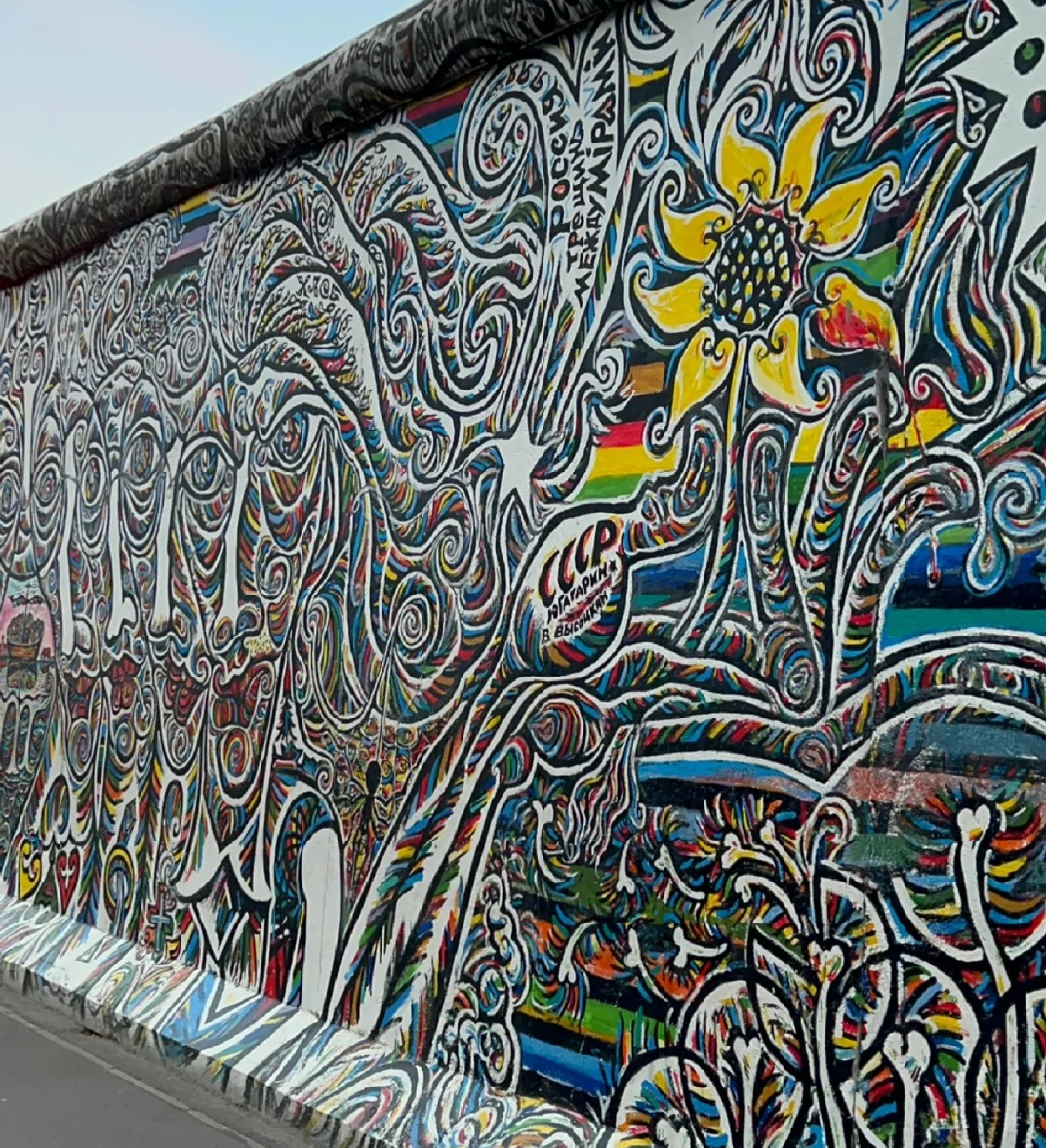

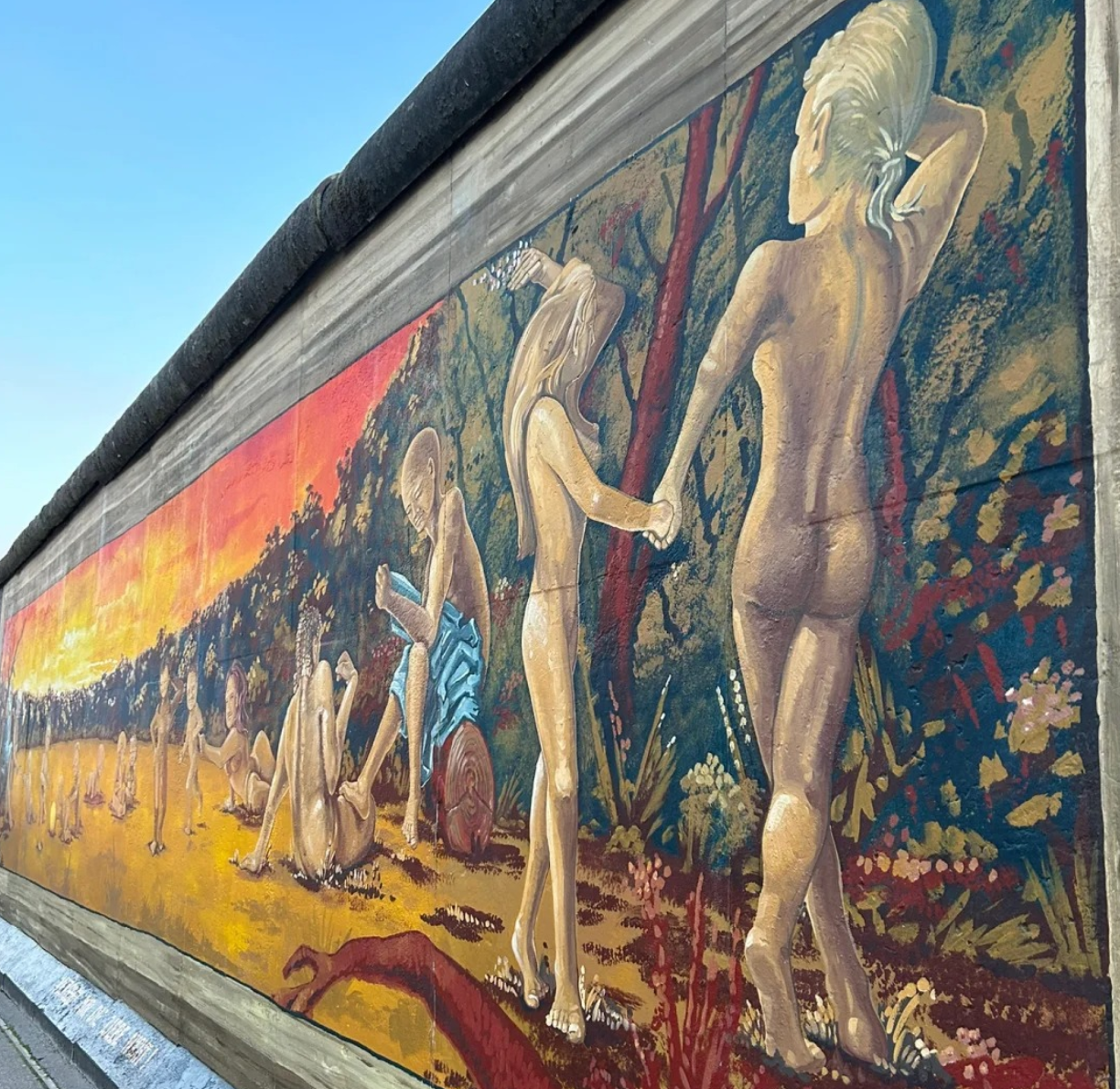

The history of Berlin dates back to the 13th century AD, when it was just a small town. Over time, however, it became the political, economic, and cultural center of Germany. During World War II, Berlin suffered severe damage and the city was divided into eastern and western parts, occupied by the United States and the Soviet Union respectively. This history has left a deep mark on Berlin and shaped its unique cultural landscape.
East gallery
Address: Muhlenstraße 3-100, 10243 Berlin, Germany Free, 24 hours a day Access to the Berlin Wall, once a symbol of the division between Germany and Berlin, is now a historic monument reminiscent of the Cold War era.
The East Gallery on the main street of Millenstrasse an der Spree is the longest surviving section of the Berlin Wall and one of the most important memorials in the city. Inside the more than 1.3km long wall, you can marvel at around 100 paintings by artists from all over the world who have transformed the wall into an open-air gallery.
His most famous work is the Brother's Kiss by Dimitri Vrubel. A small part of the wall even remains in its original condition. The Berlin Wall Memorial and Documentation Center are also worth visiting. The Wall Museum at East Side Gallery is also exciting. Nearby, by the way, is the landmark Oberbaum Bridge in the Friedrichshain-Kreuzberg district. In summer, cafes and squares on the riverbank invite you to see the hustle and bustle of the city.

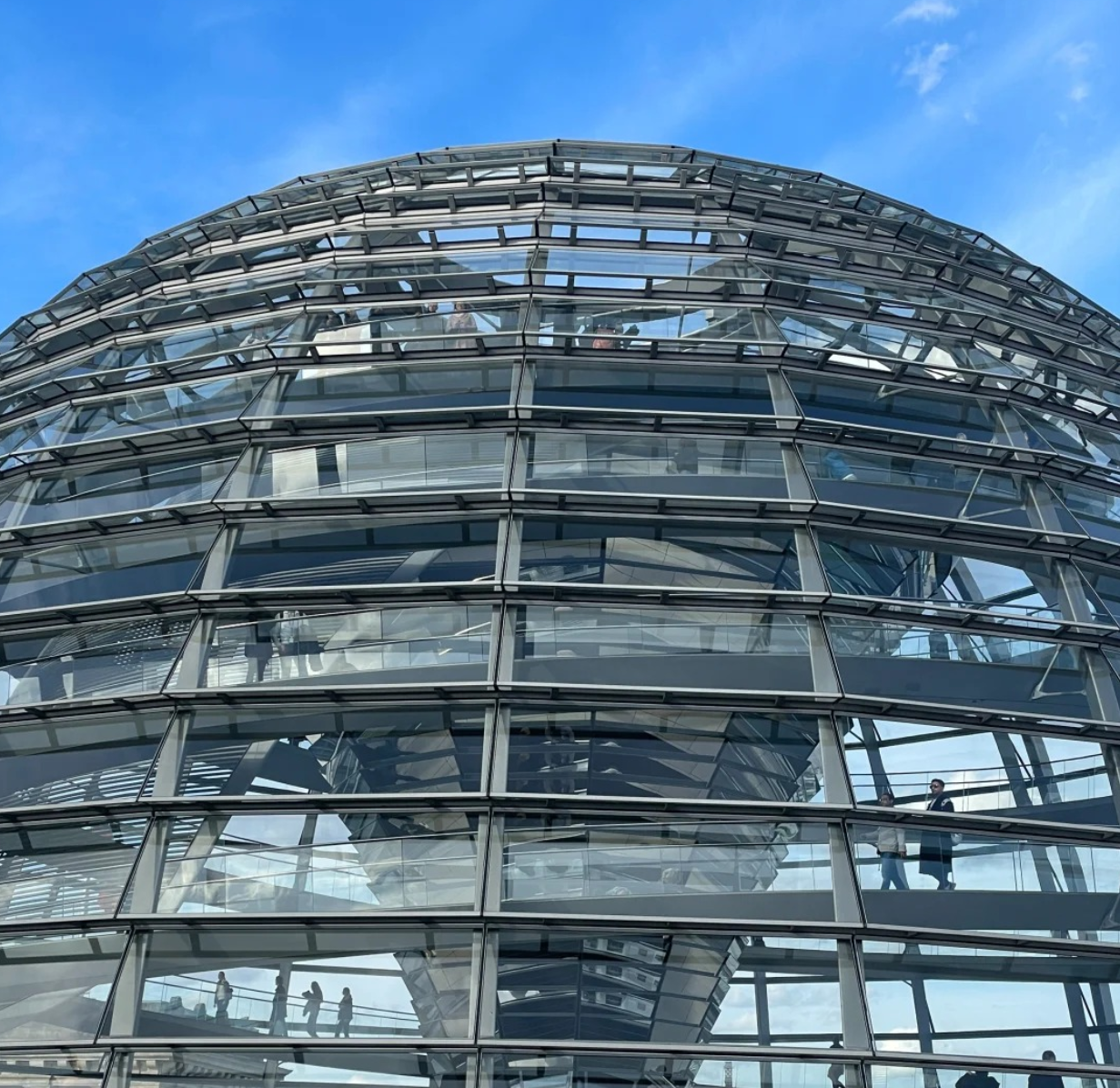
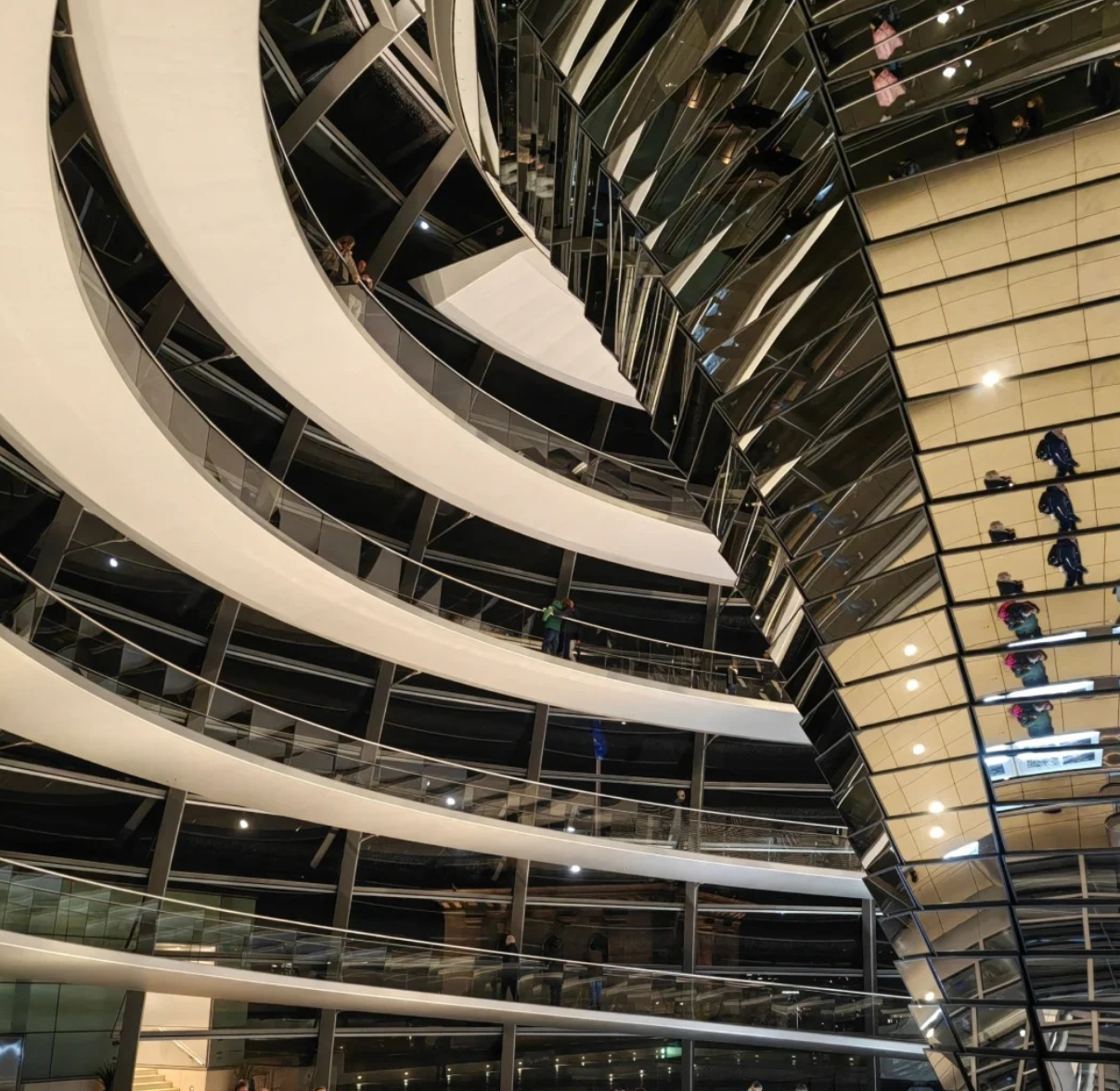

The breathing 🇩🇪 Capitol Dome
The Reichstag requires advance booking on its website. Free visit and audio tour in Chinese! After walking around the dome, a lot of knowledge platform can also overlook the whole Berlin, is one of the attractions worth going to.
The modern glass dome we now see in the Houses of Parliament was designed by British designer Norman Foster in the 90s, and this dome also makes the houses of Parliament a breathing structure
Inside the transparent dome, stands an inverted conical glass reflective structure shaped like a whirlpool, from the top of the dome, all the way down to the lower floor of the parliament hall.
The surface of the inverted conical structure is neatly covered with lenses, bringing outdoor light into the interior of the parliament hall, solving the problem of lighting sources during the day, and the use of double-layer glass with anti-ultraviolet and thermal insulation effects avoids light pollution and excessive heat caused by direct sunlight.
As a breathable structure, the dome's circular holes can vent the hot air gathered in the upper floors to the outdoors, and the heat is recovered through the heat exchanger. At the same time, fresh air is introduced and evenly sent to the walls and floors of the hall, thus reducing the noise generated by the ventilation equipment. At the same time, rain water also flows into the inverted cone to collect for summer cooling, and the members below are not affected by rain when they meet. Germany is a leader in architecture and industry
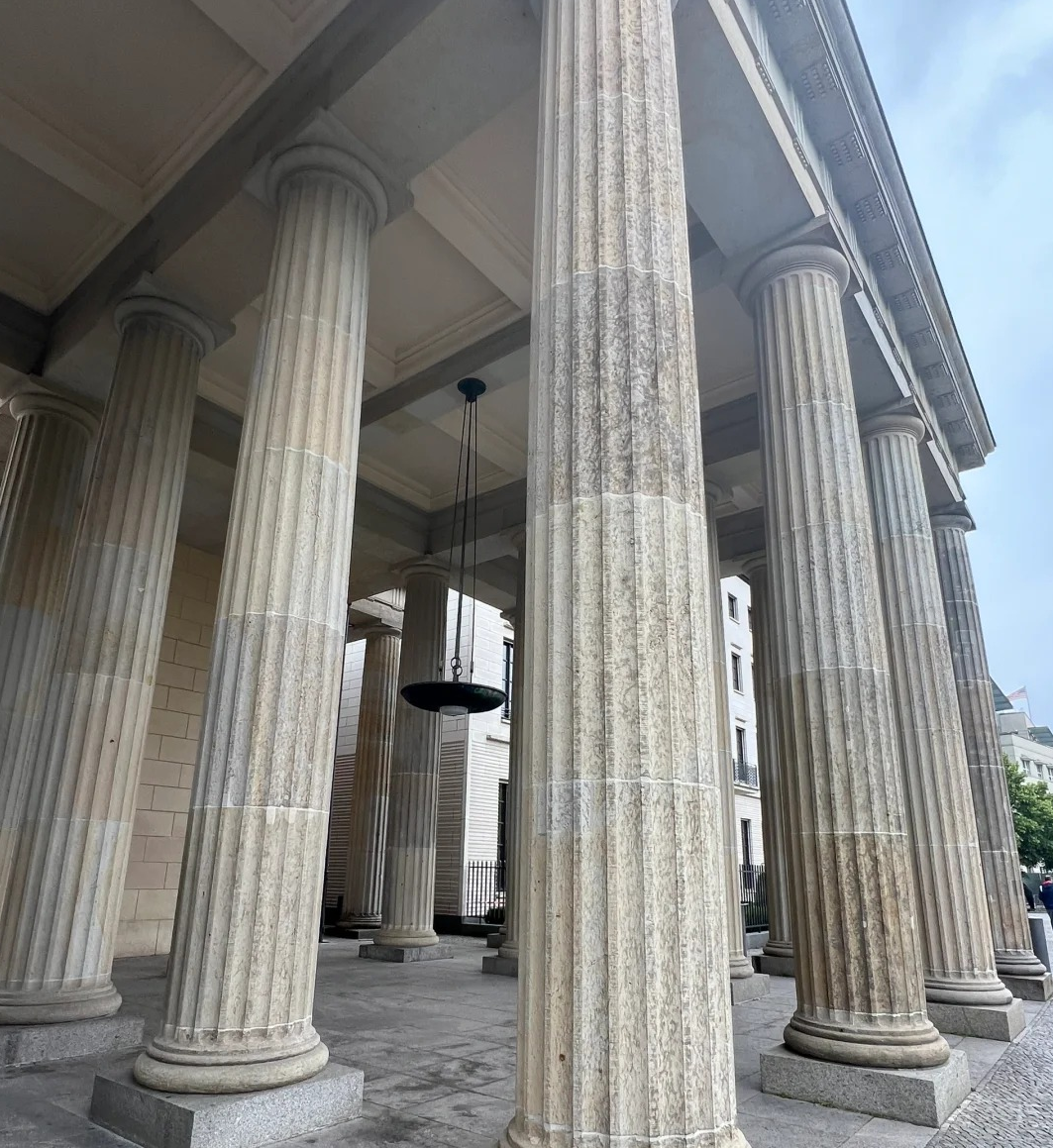
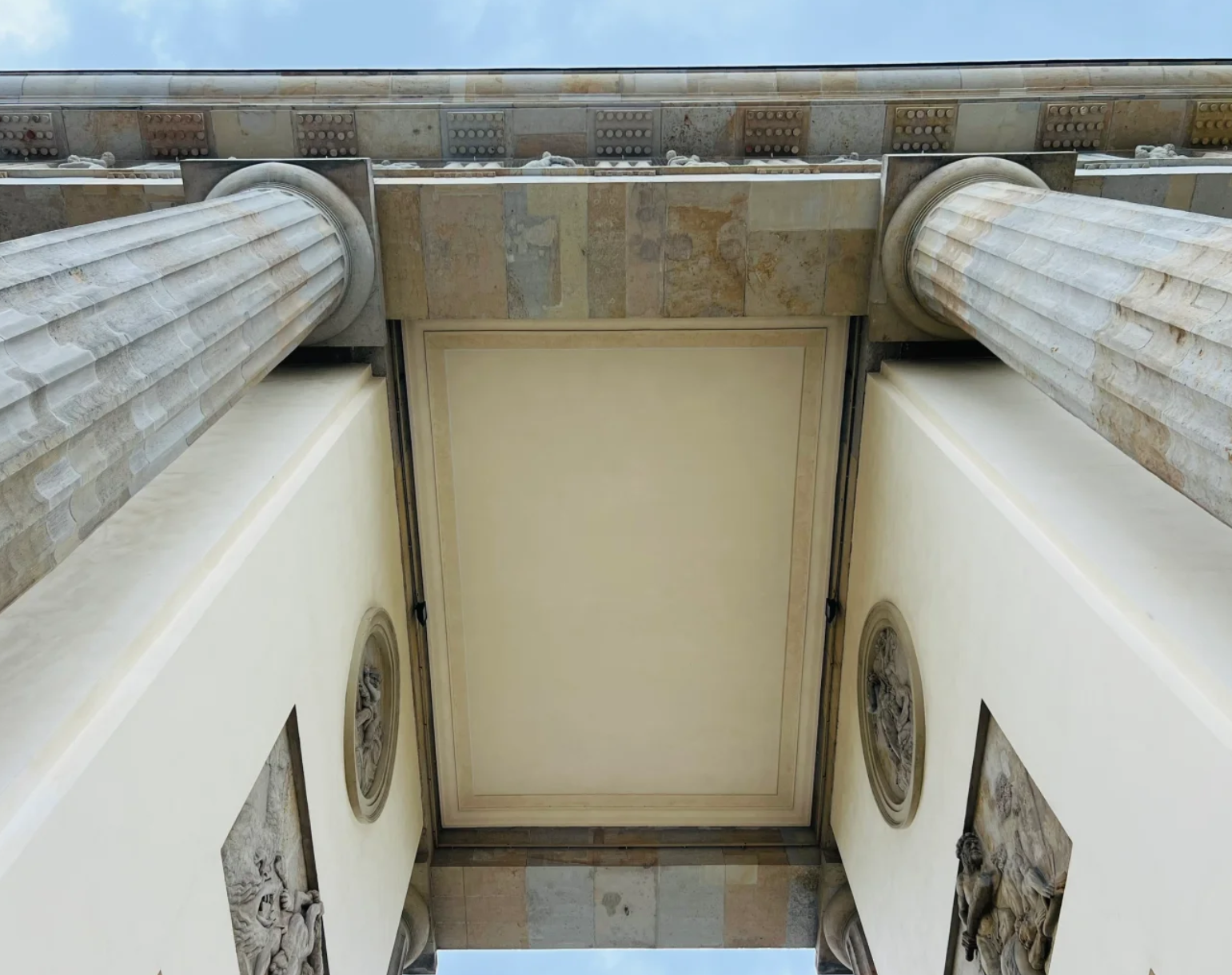
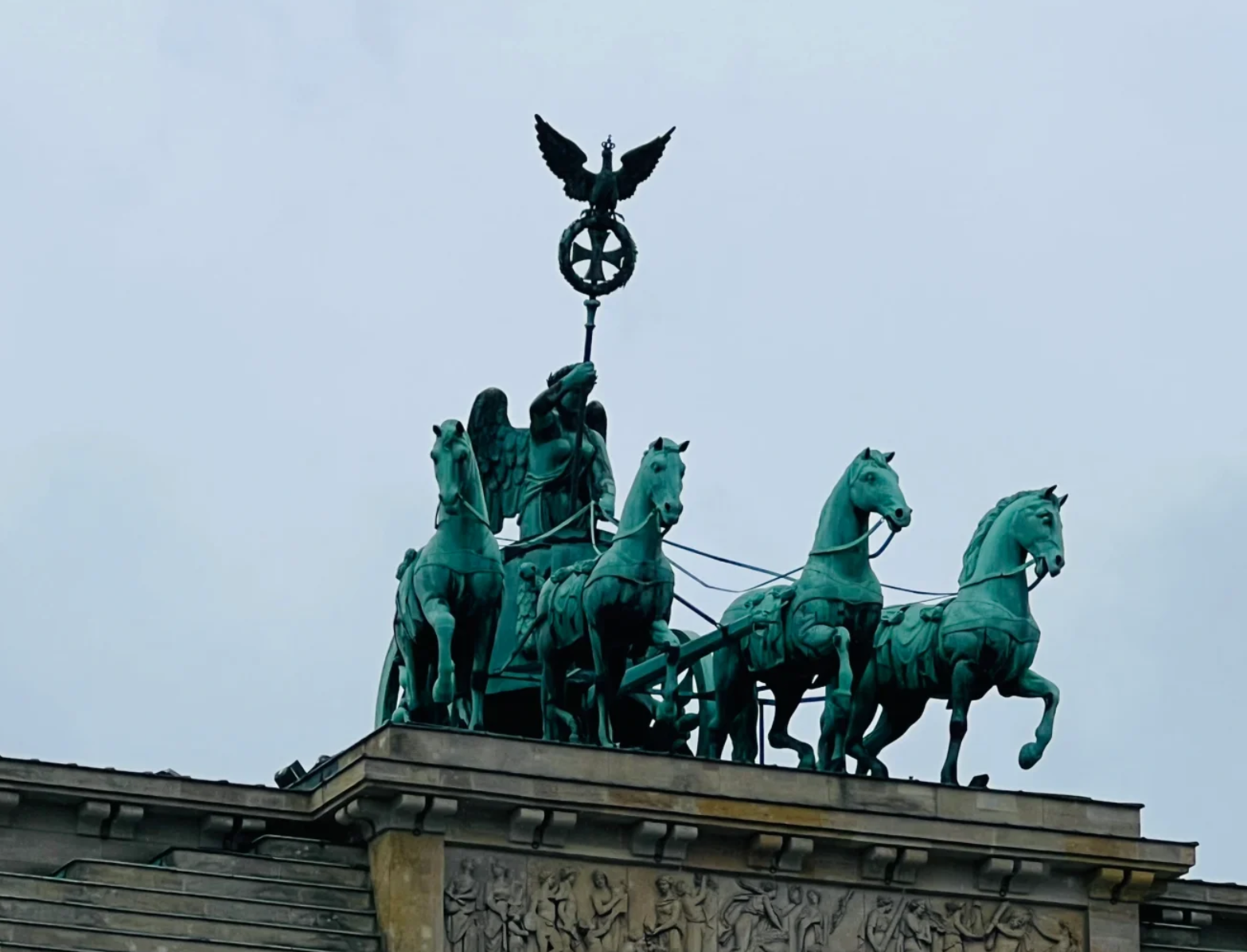
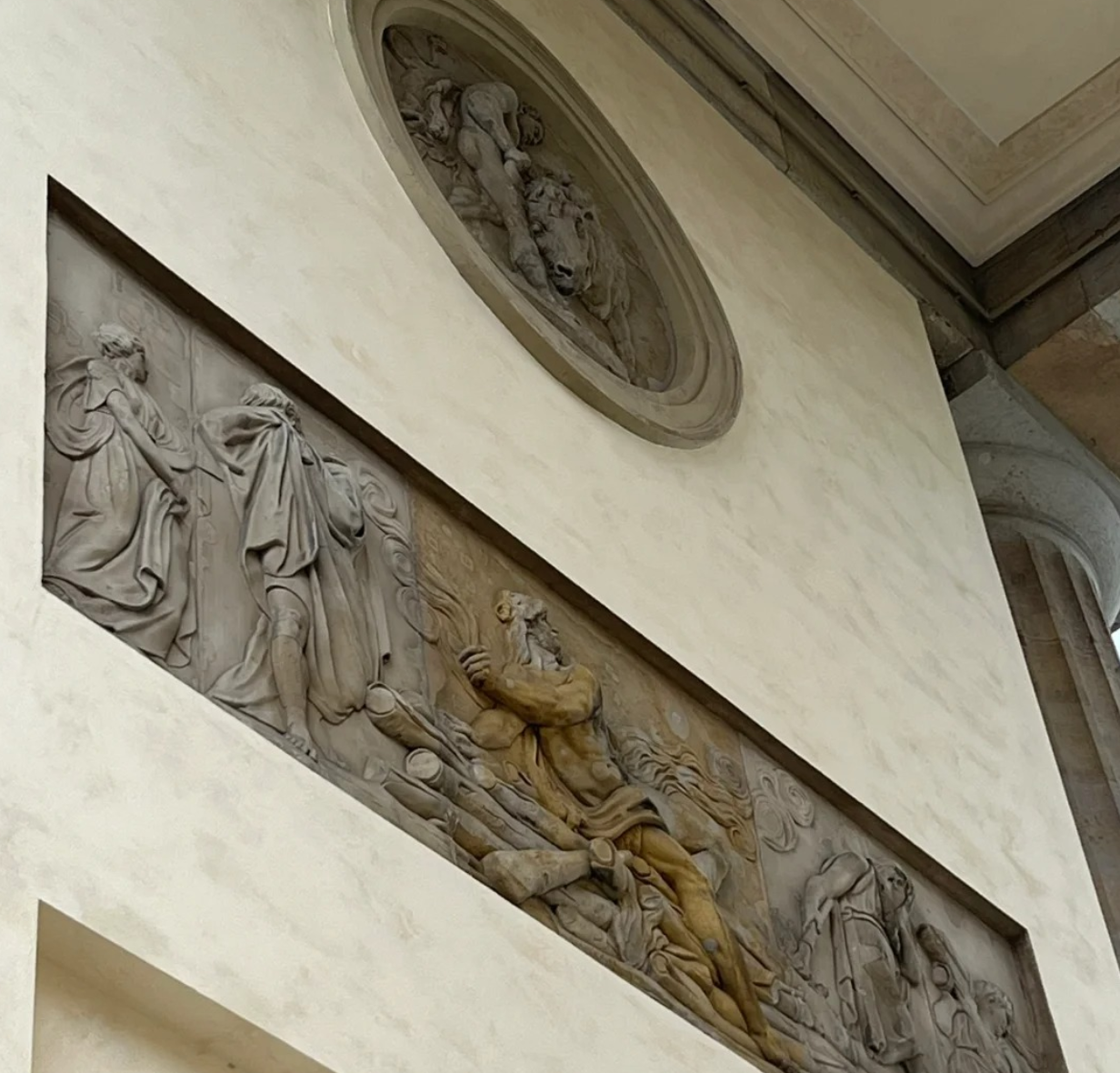
The Brandenburg Gate
"Under the Canopy" is a classic movie. In the film, two angels wander around Berlin, listening to prayers and bearing witness to the people who guard the city and its people.
In reality, Berlin also has a witness: the Brandenburg Gate Brandenburger Tor.
Since its completion in 1735, it has witnessed the rise of Prussia, the iron horseshoes of Napoleon, the revival of Germany, the fervor and decay of two world wars, the pain of division, and the joy of reunion.
It has witnessed the growth of Berlin, and even the rise and fall of the whole of Germany, and today the Brandenburg Gate has become a symbol of Germany.
The Brandenburg Gate is a neoclassical sandstone building, the colonnaded architecture style of the Acropolis in Athens, Greece, and the highest point on the gate is a copper sculpture of the Goddess of Victory about 5 meters high.
The goddess spread her wings behind her and drove a four-horse chariot toward the eastern side of Berlin, holding in her right hand a scepter with a wreath of oak trees, an iron Cross inside the wreath, and on the wreath stood a winged eagle wearing the Prussian crown.
The Brandenburg Gate is 26 meters high, 65.5 meters wide, and 11 meters deep. It is supported by 12 Doric columns of 15 meters high and 1.75 meters in diameter at the bottom. There are 6 Ionian columns carved on the east and west sides, and a wall between the front and rear columns divides the gate into 5 gates.
The central passage was designed for the passage of the royal family, and the inner wall of the gate featured reliefs depicting Hercules, the greatest hero of Roman mythology, Mars, the god of war, and Minova, the goddess of wisdom, the protector of artists and craftsmen.
推荐阅读:

